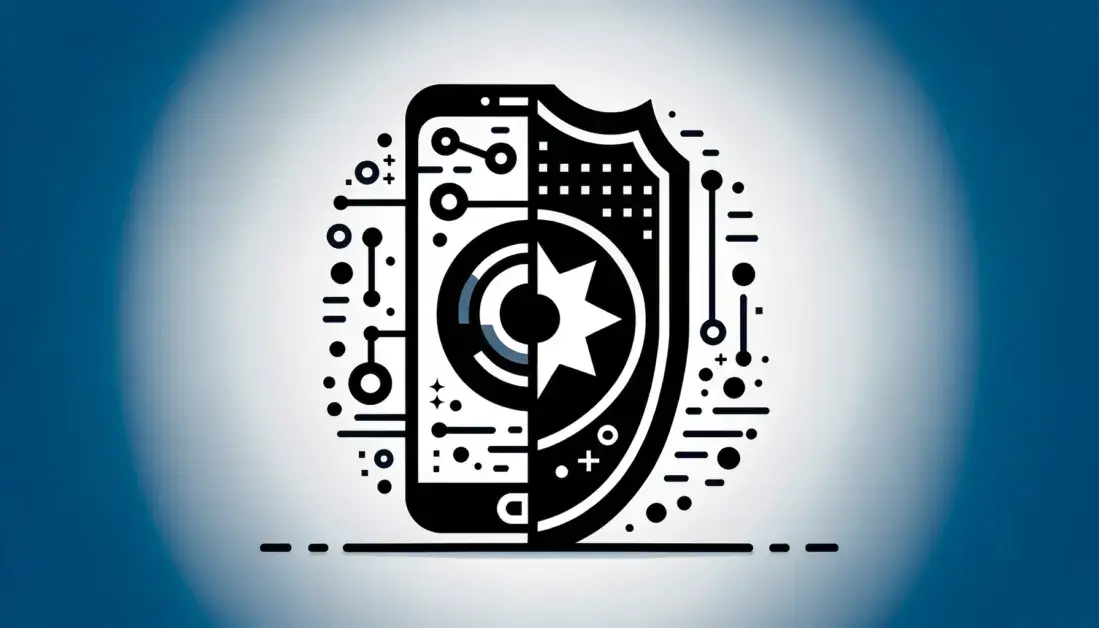The case of Gambrel v. Knox County, 25 F.4th 391 (6th Cir. 2022) brings to light the complex issue of qualified immunity and the use of deadly force by law enforcement. The Sixth Circuit overturned a decision on qualified immunity in this case, due to a tricky aspect of determining credibility of witness statements. In this case, a witness initially supported the officers’ portrayal of events surrounding the incident, but later changed their statement, claiming that they only sided with the officers out of fear. Despite the agreement of many other witnesses with the officers’ portrayal, the court still allowed the change in the witness’s story to be heard by the jury. During litigation, witnesses are generally allowed to change their statements if they have a valid reason for doing so, but whether the jury ultimately believes the witness, given that they have changed their story, is left to the jury to decide.
As always, the court must consider “genuine factual disagreements in the light most favorable to the plaintiff” when determining whether to grant qualified immunity. Due to a change in testimony, the Sixth Circuit had to review the entire case with this new information in mind. If a reasonable jury could believe the plaintiff’s version of events and that version clearly shows an excessive use of force, the court cannot grant an officer qualified immunity. In this case, the new witness statement supported the plaintiff’s view of the facts, creating a difficult situation for the officers involved.
Knox County Sheriff’s Deputy Mikey Ashurst and Knox County Constable Brandon Bolton received a call from dispatch around 10:00 p.m. that Jessie Mills had kidnapped his daughter from her grandparents who had custody of her. The officers located Mills carrying his daughter down the middle of an unlit road, with a passerby using a flashlight to alert passing motorists. When the officers ordered Mills to stop, he ignored their commands. According to the officers and several witnesses, at this point, Deputy Ashurst discharged his taser, striking Mills, who fell to the ground. Once on the ground, Constable Bolton took the child from Mills. After retrieving the child, it was undisputed that the officers engaged in a five-minute struggle with Mills. During this altercation, Deputy Ashurst tased Mills in drive-stun mode, struck Mills with his flashlight multiple times, kneed Mills in the face and head, and repeatedly hit Mills with his baton. While Deputy Ashurst landed these blows, Constable Bolton struck Mills with his flashlight several times, tased Mills in the neck, and hit Mills with his baton. According to the officers, Mills showed no signs of pain at the end of their struggle, instead telling them that upon getting up, “I am going to hurt you.”
As Mills got up, Deputy Ashurst transitioned from his baton to his firearm and backpedaled to put distance between them. According to the officers and witnesses, Mills began to run towards Deputy Ashurst with clenched fists. Deputy Ashurst pointed his gun at Mills and warned that he would shoot if Mills kept approaching. Mills refused to stop, and Deputy Ashhurst fired two rounds when Mills got within a few feet, killing him.
Mills’s mother sued the officers under 42 U.S.C. § 1983 and Kentucky law, alleging among other things that the officers used excessive force in violation of the Fourth Amendment against Mills. The district court held that the officers were entitled to qualified immunity on the plaintiff’s Fourth Amendment claim.
Mills’s mother appealed, arguing that the officers used excessive force three times: (1) when they hit Mills to recover his child (the plaintiff claimed that the officers struck Mills with a flashlight or some other dark object); (2) when they struggled with Mills while allegedly attempting to arrest him; and (3) when Deputy Ashurst shot him. The investigation that followed the shooting initially revealed a largely consistent story from the officers and bystanders: Mills had threatened to harm the officers, fought them with “superhuman” strength, and charged at one of them just before the shooting.
During litigation, however, one of the bystanders, Ricky Hobbs, claimed for the first time that he lied to the police during that investigation. Hobbs claimed in a deposition that the officers brutally beat Mills even though Mills did not resist, that they could have easily handcuffed him, and that the shooting should not have happened. Against this backdrop, the Sixth Circuit Court of Appeals had to determine if the district court improperly granted the officers qualified immunity.
Sixth Circuit Opinion
First, the court analyzed the officers’ first use of force designed to recover Mills’s daughter. Under the officers’ version of events, Deputy Ashurst tased Mills in the back; under the plaintiff’s version, Deputy Ashurst and perhaps Constable Bolton hit Mills in the back of the head with a flashlight or similar blunt object. Because it was required to view the facts in the light most favorable to the plaintiff, the court assumed that the officers struck Mills in the back of the head as opposed to tasing him in the back. Even under the plaintiff’s version of events, the court concluded that the officers’ initial use of force was reasonable. First, the officers had probable cause to believe that Mills had kidnapped his daughter, a serious crime. Second, the officers could reasonably believe that Mills was putting his daughter’s life at risk by carrying her in an obviously unsafe location, while engaging in bizarre, unpredictable behavior, potentially caused by drug use. Finally, Mills resisted arrest by refusing to comply with the officers’ commands to stop and, instead, fled in the other direction.
Next, the court considered the officers’ second use of force, when they struggled with Mills for five minutes. Under the officers’ version of events, their use of force was reasonable under the circumstances. Initially, several witnesses corroborated their account, even Hobbs who claimed in his initial police interview that Mills was “fighting all the time” while on the ground. However, the plaintiff claimed that the officers brutally beat Mills, even though he was not resisting. This position was supported by testimony from Hobbs who now claimed that the officers “repeatedly kept hitting Mills” even though he was “not fighting” back. The officers asked the court to ignore Hobbs’s testimony on the ground that it was “blatantly contradicted” by other witness testimony and evidence. The court commented that, “The officers are correct that they will have plenty of evidence with which to impeach Hobbs. Their testimony—not to mention the testimony of other bystanders—starkly conflicts with the account Hobbs gave at his deposition. In his night-of-the-shooting interview, moreover, Hobbs himself corroborated the account told by the other witnesses. At the deposition, however, Hobbs changed his story and suggested that he had lied to the police during their investigation because he was afraid of them.” The court emphasized that, while the plaintiff might struggle to convince a jury to believe Hobbs, it was ultimately up to the jury whether to believe Hobbs or not, as the court was not permitted to choose which story it found more believable. Consequently, the court held that if a jury believed the plaintiff’s account, it would show the type of “gratuitous” violence that violates the Fourth Amendment.
Finally, the court considered the fatal shooting of Mills by Deputy Ashurst. According to the officers’ version of events, which was corroborated by some witnesses, Deputy Ashurst’s actions were reasonable. Under this version of events, Mills had just fought aggressively with the officers as they tried but failed to arrest him. Mills then threatened the officers that he was going to “hurt” them after he got off the ground. When Mills did so, he quickly charged at a backpedaling Deputy Ashurst. During this time, Deputy Ashurst repeatedly warned Mills to stop or he would shoot, and he did not fire until Mills was within arm’s reach. Given the ferocity that Mills had shown during the encounter and the threat that he had made, according to the officers, the court concluded that any reasonable officer would have decided to use deadly force to subdue the charging Mills despite his lack of a weapon. However, the court stated that this was not the version of events that it was bound to accept as true at this stage of the litigation. Instead, it was bound to accept the plaintiff’s version. Under the plaintiff’s version, supported by Hobbs’s testimony, the court concluded that it could not find that Deputy Ashurst acted reasonably. According to the plaintiff’s version, the officers had just brutally beaten a non-resisting Mills, even though they could have handcuffed him at any time while he remained on the ground. Hobbs also indicated that, for some unknown reason, the officers “riled” a nearly unconscious Mills “up” by standing over him and kicking him. According to Hobbs, after he got up, the unarmed Mills took only a step or two toward Deputy Ashurst at a walking pace when Deputy Ashurst fired. Although Deputy Ashurst shouted a warning, he waited only a second to fire. At that moment, Mills was not even looking at Ashurst and was six to eight feet or more away. As with the officers’ second use of force, the court held that it was up to the jury and not the court to decide which version of events to believe, which precluded the court from granting Deputy Ashurst qualified immunity. The court found that if a jury believed the plaintiff’s version, it was clearly established that Deputy Ashurst’s shooting of Mills under these circumstances was unreasonable.
Takeaways
In this case, the decision regarding qualified immunity hinges on whether the jury believes the new testimony provided. There are safeguards in place to protect officers from situations like this, such as the use of body-worn cameras. While the officers in this case still have a chance as there were other witness statements that supported their account of events, it is important to remember that even one witness siding with the plaintiff’s portrayal of events can result in a denial of qualified immunity. To mitigate this risk, it is crucial to thoroughly collect witness statements and to be aware of the process for changing witness statements in your jurisdiction.



